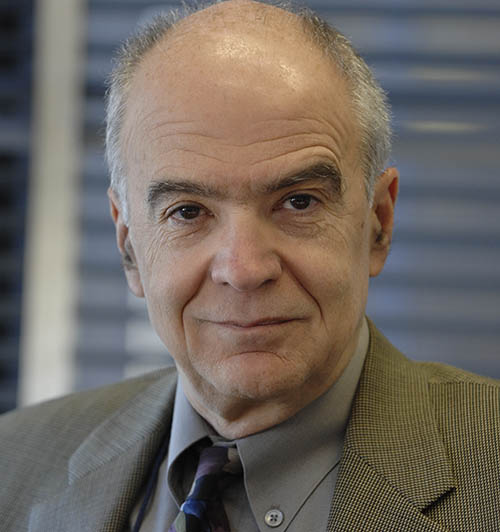
Professor Dimitri Antoniadis has been selected to receive the 2015 IEEE Jun-ichi Nishizawa Medal “for contributions to metal oxide semiconductor field-effect transistor physics, technology, and modeling”. The medal, sponsored by the Federation of Electric Power Companies, is given for outstanding contributions to material and device science and technology, including practical application.
Professor Antoniadis joined MIT in 1978, and in 1984 was the founding Director of the Microsystems Technology Labs where he continues to be a member today. From 1993 to 2000, Antoniadis was Director of the Semiconductor Research Corporation (SRC) MIT Center of Excellence for Microsystems Technology, and he served as Director of the national multi-university Focus Research Center for Materials Structures and Devices centered at MIT from 2000 to 2012.
Antoniadis' research has focused in the area of semiconductor field-effect transistor physics, technology and modeling. In the late 70’s he made seminal contributions to the understanding of point defect mechanisms in atomic diffusion in silicon. He also was the author of the Si process simulator, SUPREM, the first tool of the era of modern semiconductor technology CAD. In the early 80’s, he pioneered experimental field-effect nanostructures that became the basis for many investigations, jointly with colleagues and students at MIT, of quantum effects in electron transport in ultra-small silicon and III-V field-effect devices. His research led to several firsts, including lateral surface superlattice, quasi-one dimensional density of states, and single-electron transistor (SET) demonstrations. In parallel he led research that in 1985 resulted in sub-100-nm Si MOSFETs and the first demonstration of source to channel electron injection velocities exceeding the limit of saturation velocity. This early work, along with his studies of highly non-uniform channel doping and experimental studies of SOI transistors in the early 90's, have contributed to the groundwork for today’s high-performance Si MOSFETs. His current work still focuses on the physics, technology and modeling of nanoscale Si, SiGe, and III-V field-effect devices.
Research Themes:
News Image:
